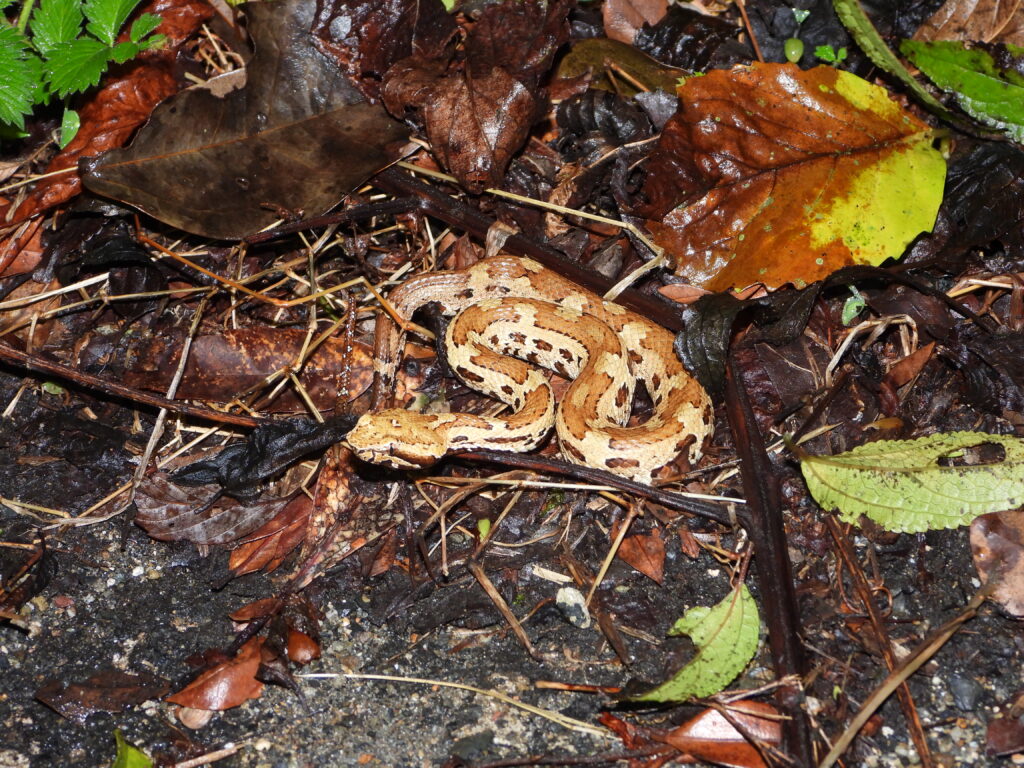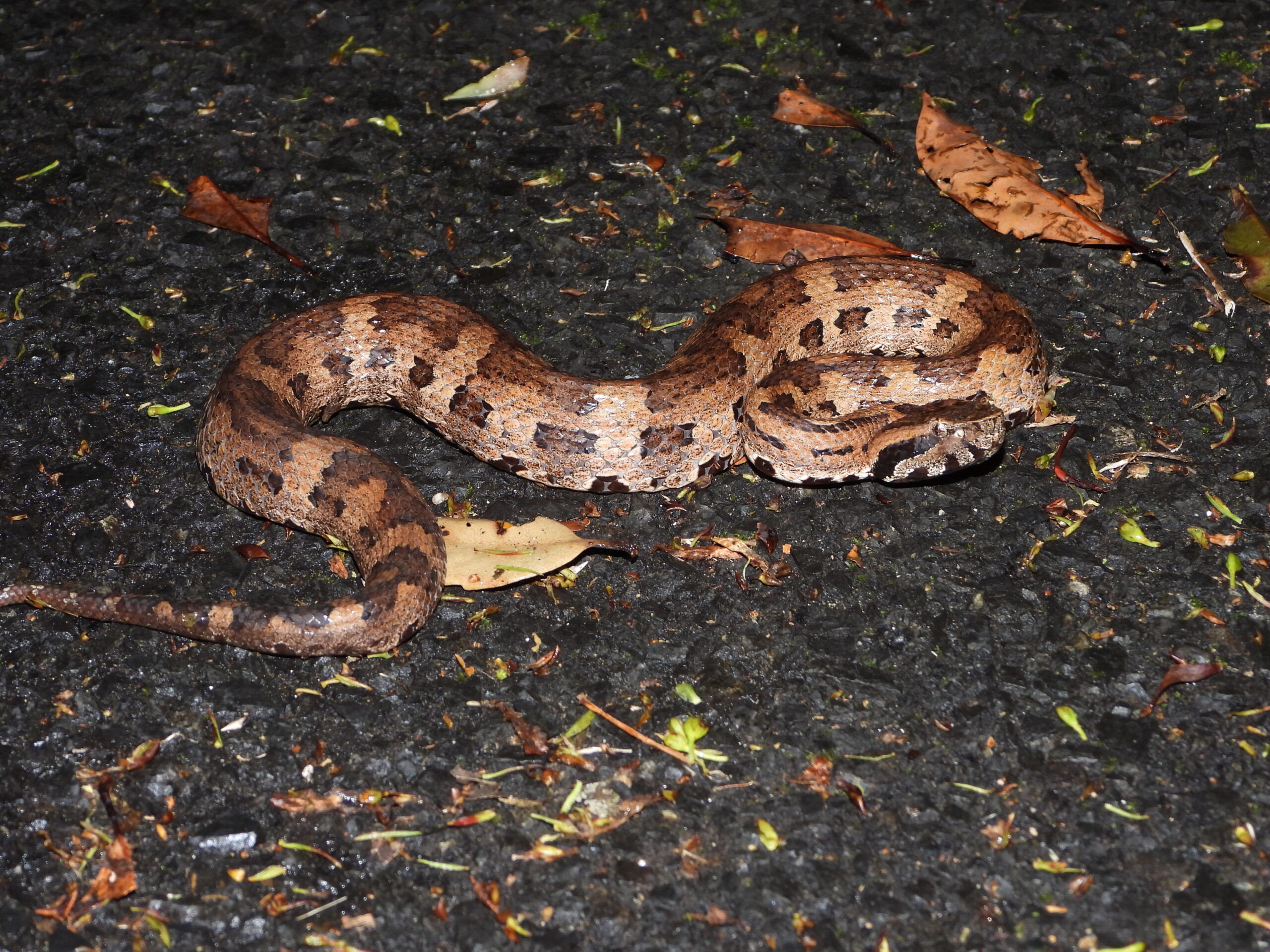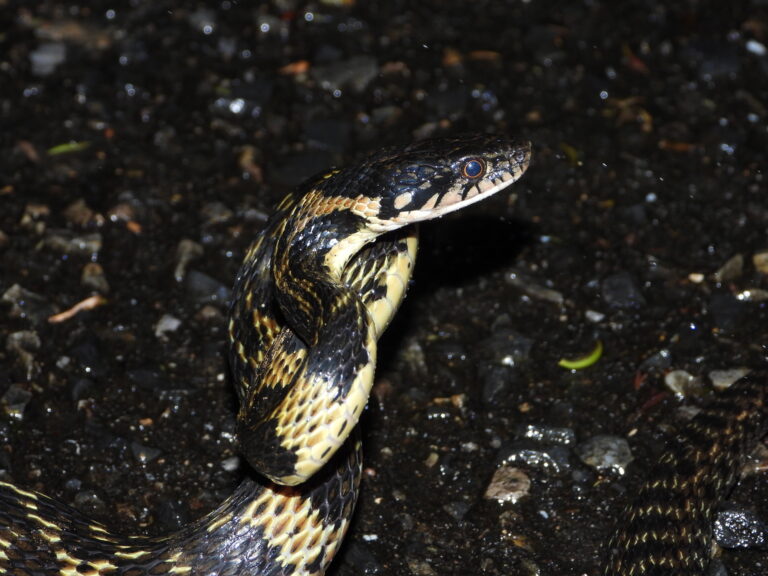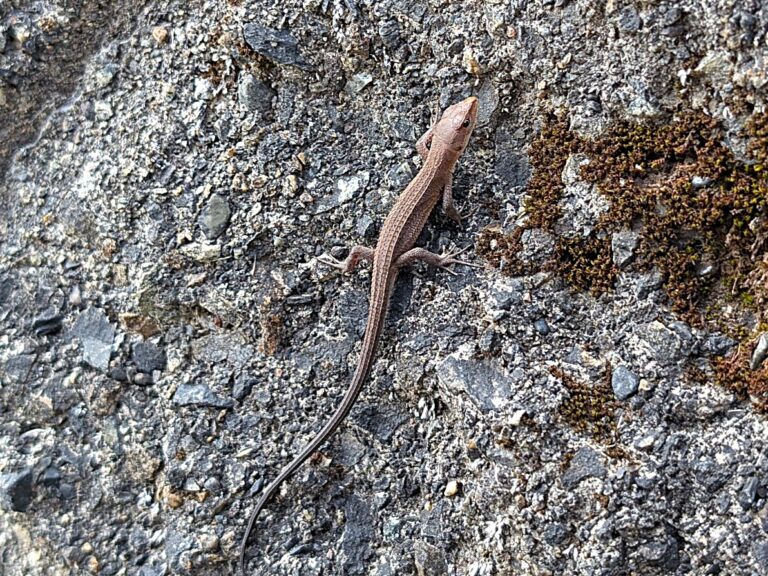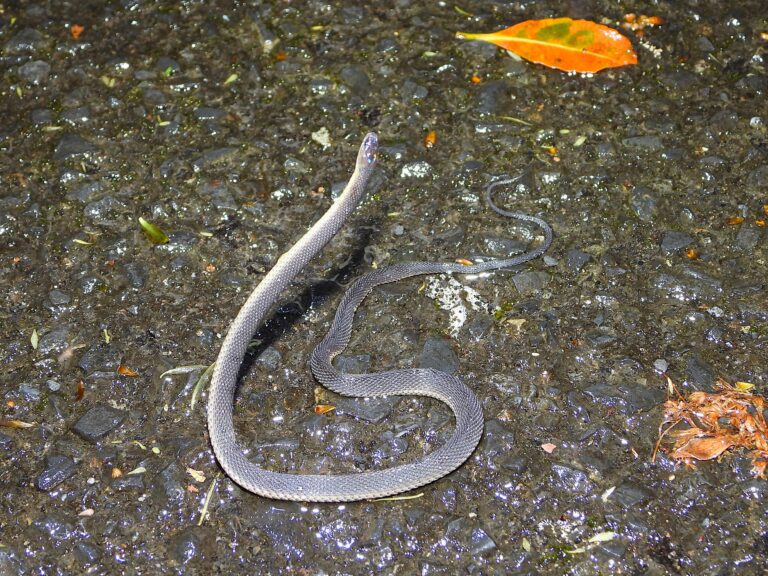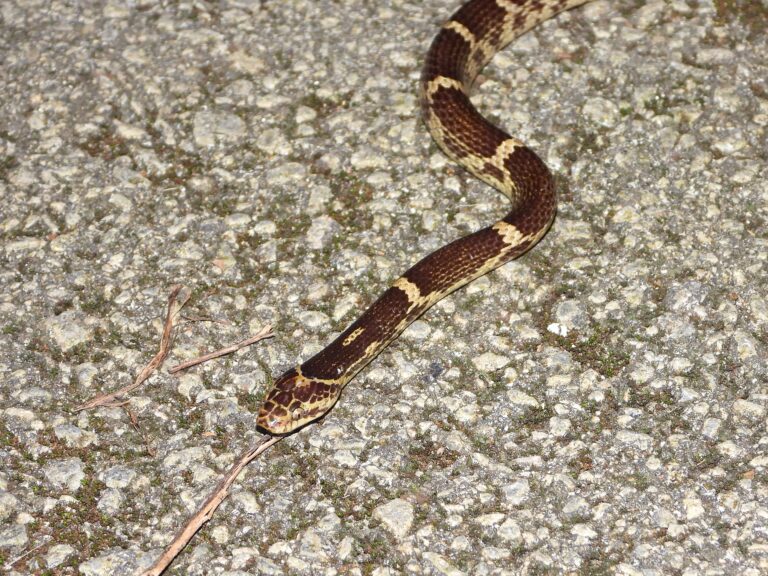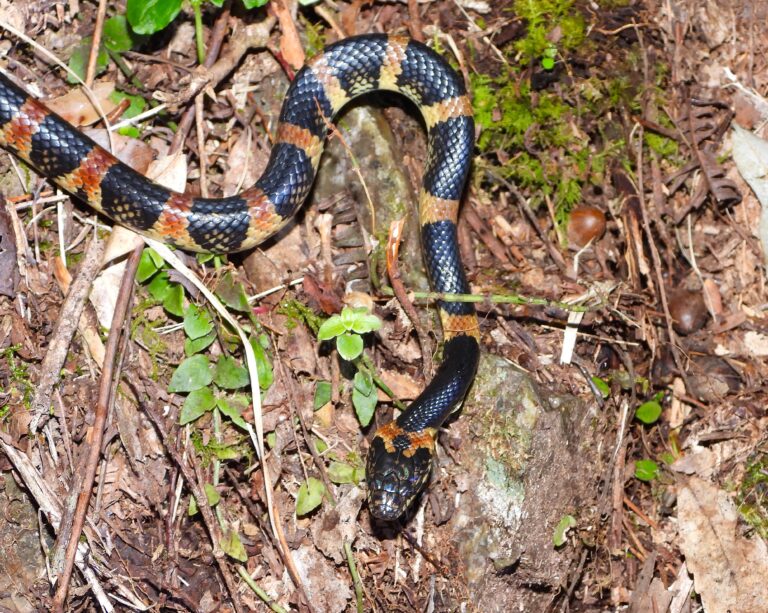Okinawa pit viper (Ovophis okinavensis) – Wildlife of Japan
Introduction
The Okinawa pit viper (Ovophis okinavensis) is a small venomous snake endemic to the Ryukyu Archipelago of Japan, found mainly on the Amami and Okinawa Islands. Although much smaller and less aggressive than the well-known habu (Protobothrops flavoviridis), this species plays an important ecological role within Japan’s subtropical forests.
Appearance
This viper has a short, thick body and a broad triangular head distinct from the neck. Its back is brown or grayish-brown with dark blotches that blend perfectly with fallen leaves. Adults usually measure between 30 and 80 cm in total length. Like other pit vipers, it has vertical pupils and a heat-sensing pit organ between the eye and nostril.
Habitat & Distribution
The Okinawa pit viper is restricted to the Amami and Okinawa Islands and absent from Japan’s main islands. It inhabits humid forest floors, stream banks, and areas with thick leaf litter. Because it feeds mainly on frogs, it often appears near streams and wetlands, especially after rain. Nighttime searches on forest roads occasionally reveal individuals resting or crossing near puddles.
Behavior
It is a mostly nocturnal and slow-moving species. Unlike many snakes that become inactive in winter, the Okinawa pit viper remains active even in cooler months, particularly around frog-breeding sites. It usually stays hidden under leaves or beside rocks. While not aggressive, it may strike defensively if disturbed or stepped on, so caution is needed when walking in damp forests.
Diet
This species primarily preys on frogs but also eats small lizards, fish, birds, and small mammals. It hunts by ambush, waiting quietly under leaves until prey passes by. Because it depends heavily on amphibians, its population density is closely linked to frog abundance in its habitat.
Reproduction
The Okinawa pit viper shows a reproductive mode close to ovoviviparity. Females produce eggs with very thin shells, and the young are already well developed at the time of laying, hatching shortly afterward. This adaptation likely helps protect the offspring from predators and the island’s humid environment.
Conservation
According to the IUCN Red List, this species is classified as Least Concern. However, local populations may be affected by habitat loss from land development and human disturbance. Although its venom is weaker than that of the larger habu, bites can still cause serious symptoms, and medical attention is essential. There is currently no species-specific antivenom. Education and awareness are important to prevent unnecessary killing and encourage safe coexistence with this unique island viper.
Author’s Impression
The Okinawa pit viper is one of the more commonly encountered snakes among the Ryukyu species. When exploring forests or mountain streams, carefully look around water sources — one might be quietly hiding nearby.
